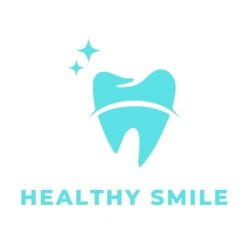An increasing number of wrinkle treatments are available. A variety of medicines on the market are available, and individuals are increasingly relying on their doctors for long-term solutions. Botulinum toxin type A (Botox) and dermal fillers are two long-lasting treatments. Both Botox and dermal fillers can be used to reduce facial wrinkles. Injections are used to make each treatment. However, both solutions have slightly different applications.
What is Botox
Botox is a purified version of the botulinum toxin produced by bacteria. A small regulated amount of Botox injected to repair wrinkles has been successfully used for decades, despite the fact that it is fatal at higher doses.
Botox works by blocking the nerve signals of the injected muscle. Damaged muscles are temporarily paralyzed or locked when these nerve signals are interrupted. Certain wrinkles can be softened, minimized, or even eliminated without moving these particular muscles of the face.
Does Botox have side effects
Botox has few side effects, but skin injections carry the risk of bruising and pain at the injection site. You may also have a headache on the first day of treatment.
How long does Botox last?
Botox injections are not permanent and the effects of treatment diminish over time. The muscle relaxant effect of Botox varies from person to person, but most people find that it lasts for 3 to 6 months. Regular Botox treatment can change the duration of effect. On average, less Botox treatment is needed to achieve the same effect over the long term. Wrinkles and wrinkles usually appear to be less severe over time because the muscles are contracting.
Dermal Fillers
Skin fillers replenish lost facial volume, effectively eliminate lines and wrinkles, restore cheek and lip volume, and rejuvenate the appearance. The injectable gel filler reduces static wrinkles that appear when the face is resting by adding volume without surgery. The filler increases volume, promotes natural collagen formation and prevents sagging of the skin by making the lips plump and raising the cheeks.
A filler made of hyaluronic acid can be injected into the skin with a very small needle to smooth out wrinkles and dents on the face, or it can be injected into the lips to provide richness and volume to your smile. Fillers are usually used in the central and lower areas of the face and are very effective in minimizing early signs of aging.
Dermal fillers help lift and plump the skin, add volume, and smooth out wrinkles and wrinkles. They can be injected directly into the lips or used in different parts of the face, such as around the cheeks, eyes, mouth and chin. Depletion of collagen and elastin causes the skin to lose its fullness with age, so the filler replaces the lost volume and gives it a more youthful appearance.
Do fillers have side effects?
“Skin fillers have rare side effects, but include bruising, swelling, lumps, and rarely vascular occlusions” (if the injected filler is accidentally injected into a blood vessel, causing obstruction or damage to the tissue supplied by the blood vessel). With blood). The latter is a very rare problem. Nerve damage, allergic reactions, and infections are relatively rare side effects.
How long do dermal fillers last?
Dermal fillers like Botox have no long-term effect. This can be healing for people who are worried about anti-aging therapies, as it can rejuvenate the face without the burden of long-term efforts or surgery. The effectiveness of dermal fillers can last from 6 to 12 months, depending on various factors such as the patient’s skin type, lifestyle and age. During your consultation, your doctor will provide you with more information on how to continue your treatment.
Botox vs Dermal Fillers
Dermal fillers like Botox are injected under the skin to reduce or eliminate visible signs of aging such as fine lines and wrinkles. However, this is where treatments are often misunderstood. Botox works by reducing the activity of the facial muscles that produce wrinkles. Dermal fillers increase the volume under the surface of the skin rather than relaxing the muscles. This makes the skin look more plump, smoother wrinkles and wrinkles, and removes the signs of aging caused by collagen depletion, making the skin look more youthful.
Botox: This prevents wrinkles and wrinkles caused by facial emotions caused by freezing muscles. These are most commonly found on the top surface, especially around the forehead and eyes.
Dermal Fillers: They use hyaluronic acid and other similar compounds to “fill” or plump areas where volume and smoothness are lost. Examples are wrinkles around the mouth, thin lips, and depressed cheeks. It can also be used to fill areas where volume is needed for a smoother look, such as wrinkles and scars on the forehead.
Botox vs. Dermal Fillers: Which is Better?
To determine the treatment option that is right for you, you must evaluate your specific facial structure, specific problem and consult a specialist. One of the most important factors to consider when deciding whether to choose Botox or a dermal filler is the type and method of wrinkles you want to remove. Both steps have different effects on different parts of the face. Botox is a good option for dynamic wrinkles as it targets muscles and helps reduce the appearance of lines that appear when moving the face or making certain facial expressions by slowing movement or visibility. is. These are usually found on the forehead, between the eyebrows, and on the sides of the eyes. Static wrinkles, which can be seen even when the face is calm and expressionless, are best treated with a dermal filler. They are most commonly found around the lips, nose and chin. The bloating that a dermal filler can achieve can improve these depleted and submerged areas.
